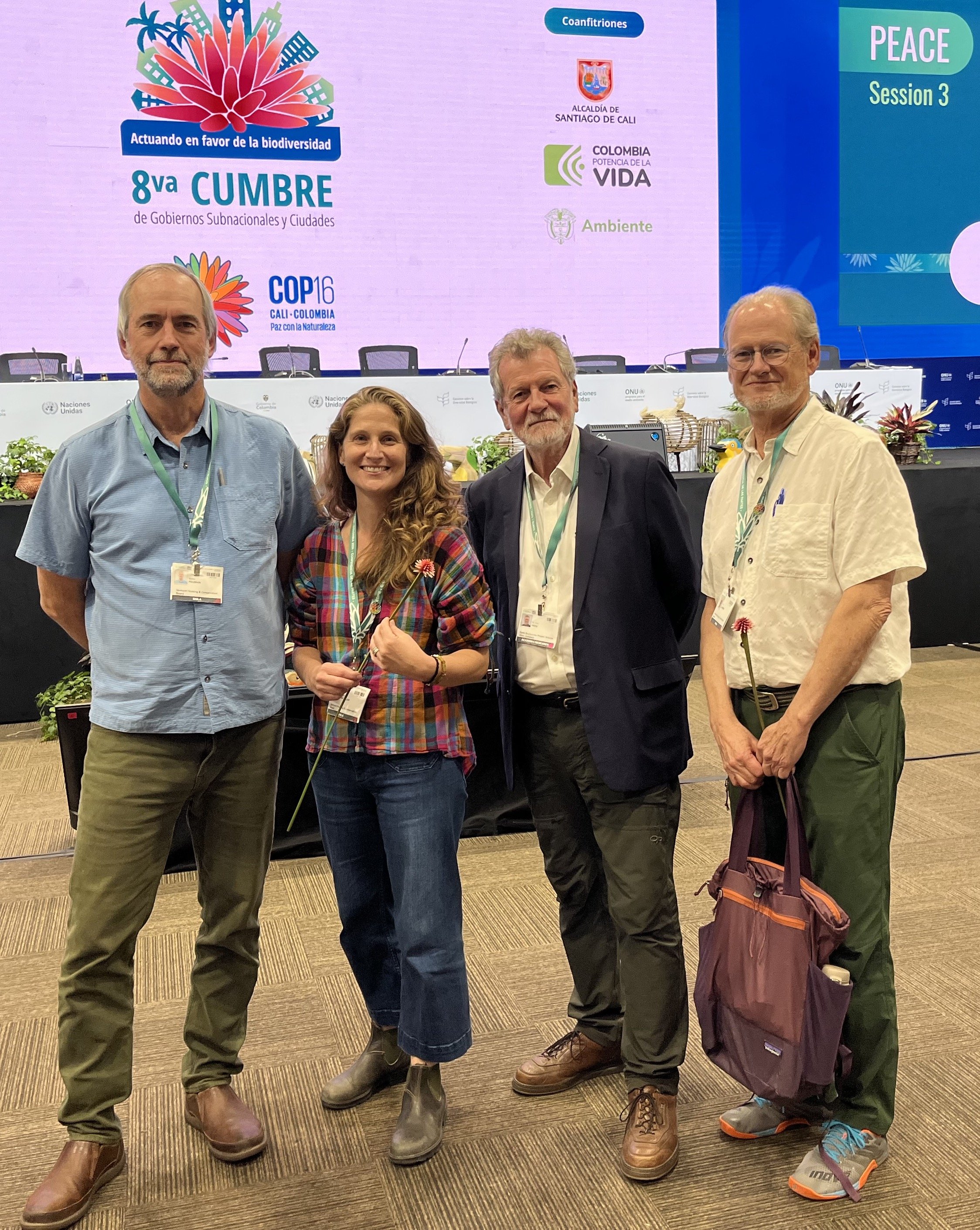Making Peace with Nature
Inspirations from COP16
Nearly 20,000 people attended COP16 in Colombia in October. Photo © Walter Poleman
Making Peace with Nature. It’s an enticing, thought-provoking notion. Are we at war with nature? What might peace look like? It was also the guiding theme of COP16, the 16th Conference of the Parties to the Convention on Biological Diversity, recently convened by the United Nations and hosted in Cali, Colombia. It was clearly on the minds of the nearly 20,000 delegates from 190 countries around the world who gathered together for two weeks to respond to the urgent call to cease humankind’s assault on the natural world, and explore how our connection with nature might even play a central role in building just and peaceful societies. Their collective task was to put flesh on the bones of the Global Biodiversity Framework (GBF) that was agreed upon at COP15 in Montreal in 2022.
Although the United States is not a signatory to the treaty that established the GBF, I was one of several Americans with “observer status” attending the gathering. As a part of a four-person team representing the Vermont Biodiversity Alliance, I had the remarkable opportunity to observe the structured UN deliberations in huge plenary halls; attend multiple presentations and workshops showcasing the latest in biodiversity science, monitoring, education, law, and finance; and have one-on-one conversations with dozens of biodiversity advocates from around the world. Not only did we learn a tremendous amount, but my colleagues and I had numerous opportunities to share about the progress we have been making in Vermont to protect biodiversity in our region, such as through our new Community Resilience and Biodiversity Protection Act, which mandates the protection of 30 percent of land in the state by the year 2030 and 50 percent by 2050. Our “30x30” approach is fully aligned with one of the 23 international targets that all countries are committed to achieving as a part of the GBF, and there was strong interest in the robust science and policy behind Vermont Conservation Design, which is serving as our blueprint.
The author and three Vermont colleagues at the conference. Photo © Walter Poleman
From ecosystem restoration to global finance, climate change to digital sequencing, biodiversity was at the center of all things at COP16. Not surprisingly, the critical role that education can and must play in addressing the biodiversity crisis was at the forefront. What was surprising—and very welcomed—was the breadth of innovative ideas for reframing all education around human connection with, and dependence on, nature. This came into focus at a full-day symposium showcasing biodiversity education, which brought together global experts, practitioners, and students to share advances in biodiversity education and to highlight its critical importance in implementing the GBF. We found the term “Nature-based Education,” as articulated by the IUCN Commission on Education and Communication, to be a very compelling integration of progressive approaches to environmental education currently being practiced in Vermont. The youth voice was front and center throughout the day, and the session entitled Nothing About Us, Without Us showcased youth perspectives on transformative education highlighting success, challenges, hopes, and aspirations.
Young women share their views on biodiversity education. Photo © Walter Poleman
Another compelling theme that emerged during COP16 was the interconnection of health and biodiversity. Planetary health—the notion that human well-being is inextricably linked with the health of the environment—was a guiding blueprint for designing and implementing action plans “so that both people and planet can thrive.” I attended several presentations about initiatives that weave together human flourishing and ecological flourishing, and I was particularly moved by the work of the nonprofit Health in Harmony in Borneo, whose representatives reported a 70 percent decrease in tropical deforestation resulting from listening carefully to healthcare needs of rainforest communities, and investing in their solutions. Closer to home, health care professionals in Canada have partnered with their provincial parks to create PaRx, a program in which over 15,000 physicians now write prescriptions for their patients to spend time in nature to improve their health and well-being.
“Making Peace with Nature. It’s an enticing, thought-provoking notion. Are we at war with nature? What might peace look like?”
As I returned to life New England after a remarkable week in Cali interacting with people from all corners of Earth, I wanted to share my strong sense that “subnational groups” (as we are referred to by the United Nations) like ours can play a critical role in turning the tide on the biodiversity crisis. We were deeply inspired by the efforts of a parallel group from California who formed a robust coalition dedicated to moving the overall biodiversity agenda forward even without the active participation of our federal government. While at COP16, we also met with a very active subnational group from Quebec that has put forth an ambitious plan for meeting all 23 GBF targets and is deeply engaged with First Nation groups from their region. By collaborating closely with our neighbors to the north on restoring and rewilding the ecologically vital forest that connects us, we have an outstanding opportunity to take important steps toward truly making peace with nature.
Editors' Note: Learn about the other gatherings that connected and inspired us in the fall of 2024.
Walter Poleman is an ecologist at the University of Vermont, where he specializes in natural history, place-based landscape analysis, and education for sustainability. He teaches courses in natural history and human ecology, landscape inventory and assessment, and conservation science. He is director of the Field Naturalist Graduate Program, serves on the steering committee for the Champlain-Adirondack Biosphere Network, and is Co-Coordinator for the Greater Burlington Sustainability Education Network.



